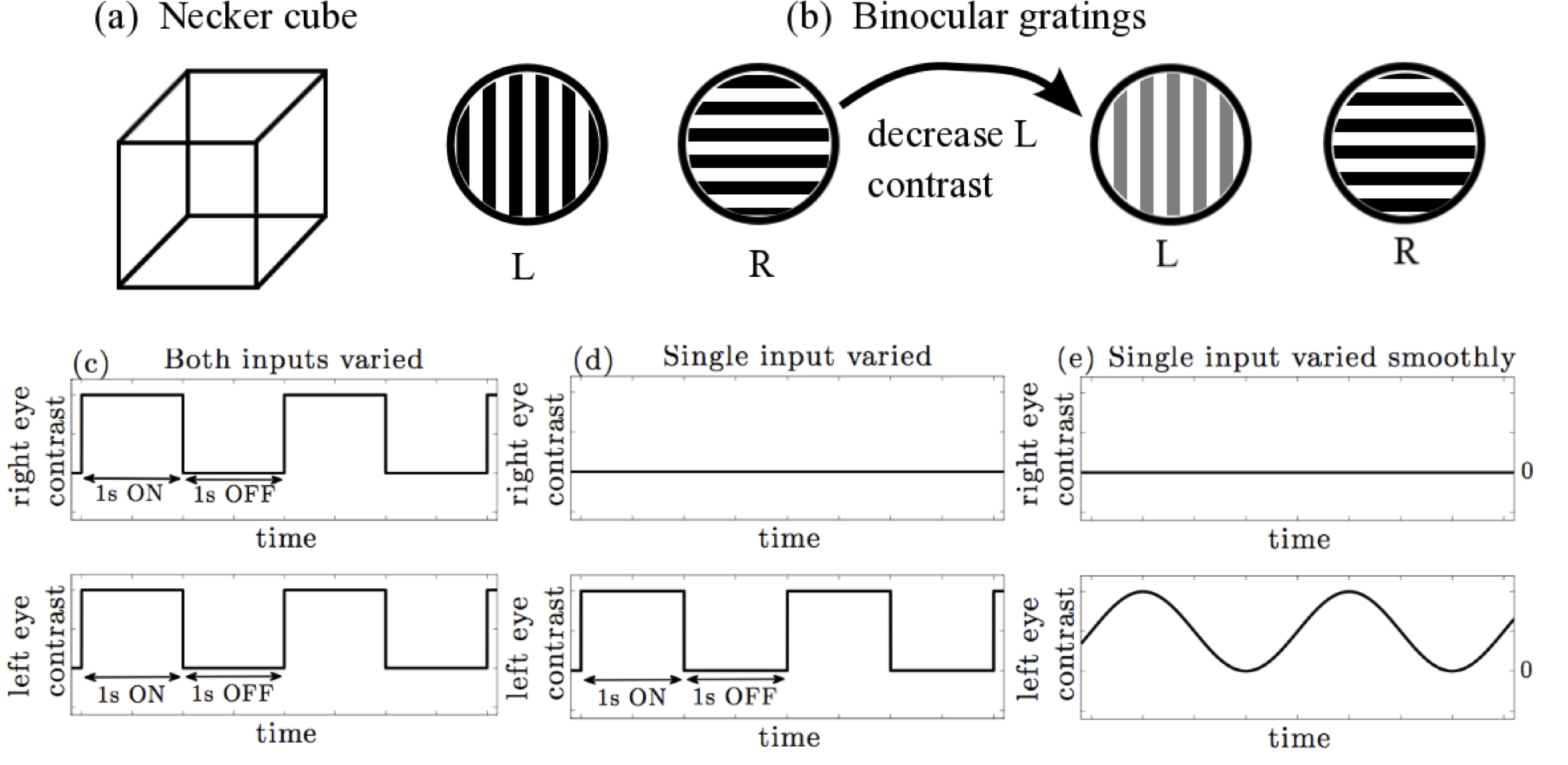Effects of time-dependent stimuli in a competitive
neural network model of perceptual rivalry.
 Effects of time-dependent stimuli in a competitive
neural network model of perceptual rivalry.
Effects of time-dependent stimuli in a competitive
neural network model of perceptual rivalry.
Suren Jayasuriya and Zachary P Kilpatrick
Bull. Math. Biol. (2012), in press.
Abstract: We analyze a competitive neural network model of perceptual rivalry that receives time-varying inputs. Time-dependence of inputs can be discrete or smooth. Spike frequency adaptation provides negative feedback that generates network oscillations when inputs are constant in time. Oscillations that resemble perceptual rivalry involve only one population being "ON" at a time, which represents the dominance of a single percept at a time. As shown in (Laing & Chow, 2002), for sufficiently high contrast, one can derive relationships between dominance times and contrast that agree with Levelt's propositions (Levelt, 1965). Time-dependent stimuli give rise to novel network oscillations where both, one, or neither populations are "ON" at any given time. When a single population receives an interrupted stimulus, the fundamental mode of behavior we find is phase-locking, where the temporally driven population locks its state to the stimulus. Other behaviors are analyzed as bifurcations from this forced oscillation, using fast/slow analysis that exploits the slow timescale of adaptation. When both populations receive time-varying input, we find mixtures of fusion and sole population dominance, and we partition parameter space into particular oscillation types. Finally, when a single population's input contrast is smoothly varied in time, 1:n mode-locked states arise through period-adding bifurcations beyond phase-locking. Our results provide several testable predictions for future psychophysical experiments on perceptual rivalry.
PDF
HTML
 Effects of time-dependent stimuli in a competitive
neural network model of perceptual rivalry.
Effects of time-dependent stimuli in a competitive
neural network model of perceptual rivalry.